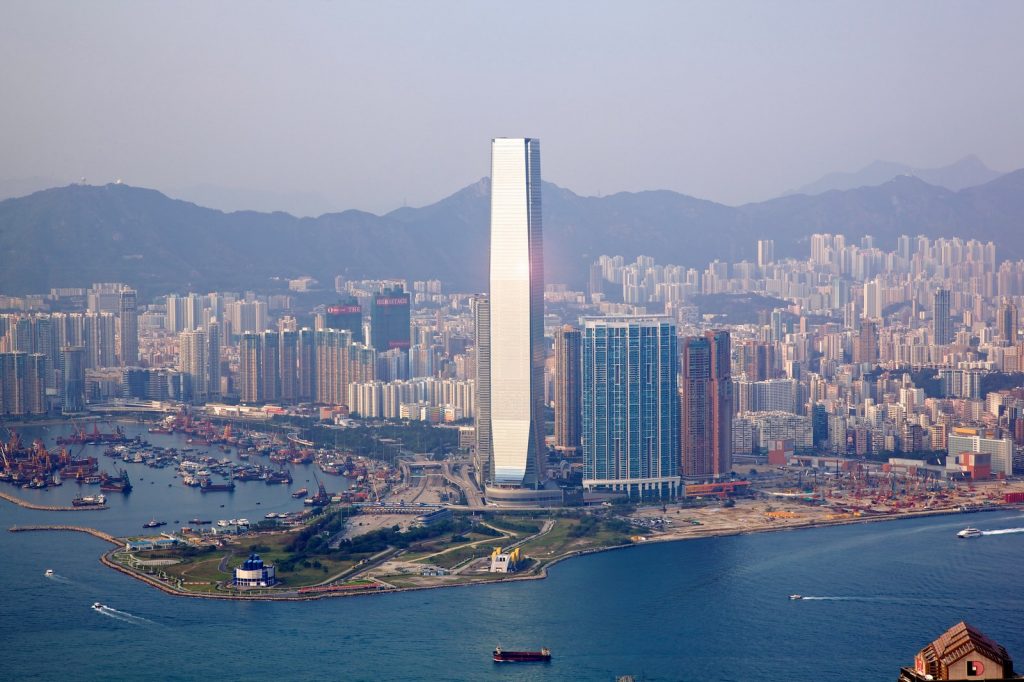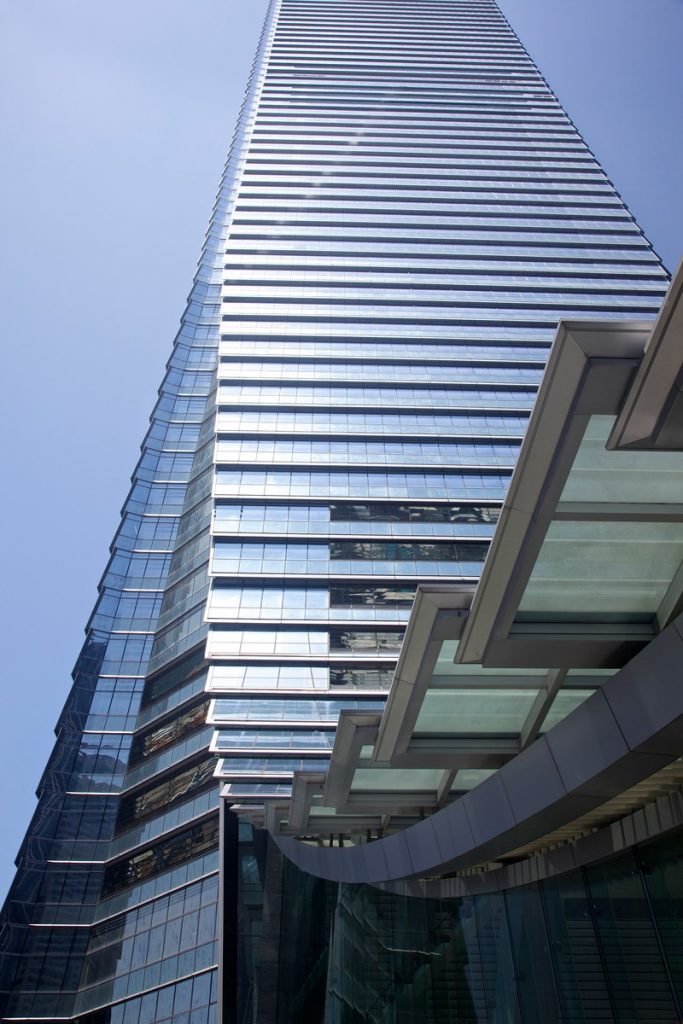International Commerce Centre | KPF
Hong Kong is often referred to as one of the densest cities in the world, lined with an impressive array of skyscrapers along its shores. The latest supertall addition by architects KPF reaches an altitude of 484 meters above the Victoria Harbor in Kowloon. Located atop the new Kowloon Station, a transportation hub that feeds a network that ferries over 11 million passenger journeys per day, the International Commerce Centre is an integral part and centerpiece of the Union Square reclamation project. Internal programming includes office space, 2 hotels, and an observation deck amongst other mixed-use functions.



Project Architect : KPF
Beginning with KPF’s winning proposal from the invited competition in 2000, the design would require numerous factors to be addressed in order to efficiently maximize floor plate area, structural loading, vertical circulation, and fiscal considerations. In order to harmonize structure and floor plate area, several options were considered including circular, which was most efficient at minimizing wind loading but was undesirable with future financial tenants who favored square floors plates. However, wind loading on rigid square shapes perform quite poorly and would require much more material, resulting in higher construction costs. Thus, through wind tunnel studies and a slight modification to the square plan through the introduction of notched or “re-entrant” corners, the structure was able to perform similar to the original circular plan.
Primary structure is handled via eight concrete mega-columns that splay out 3 degrees as they touch the ground plane. Vertical circulation is housed within the concrete core, along with vertical mechanical chases. A shingle style façade articulates the subtle curvature along the vertical portion of the tower and is amplified at the base creating canopies at the base which protect occupants from wind downdrafts along the hybrid curtain wall. The north features the most dramatic entry, which has been coined the “Dragon Tail,” which flows from the vertical plane and stretches along the horizontal plane culminating in a 12 meters towards the station plaza.
In order to achieve the shingled effect of the curtain wall, KPF collaborated with façade engineers ALT Cladding Consultants in order to distill the seemingly complex nature of the proposed curtain wall into a series of repetitive components. Each module is comprised of a 3 meter wide fixed spandrel that conceals the slab edge and perimeter beams, a 1.5 meter vision panel that infills between the top and bottom spandrel panels. Each panel is installed with a five degree take with relation to the vertical plane – which resulted in three wall types of 5, 6, and 8 degree panels over the length of the façade. The unitized system successfully reduced the number of unique panels exponentially. According to Permasteelia, the curtain wall fabricators, 75% of the façade is comprised of only 134 module types.
Sophisticated environmental control systems are abundant within the ICC. The shimmering of the glazing is owed to its silver coating which reflects the heat-generating spectrum of sunlight, whilst simultaneously allowing the transmission of visible light. Technical specifications from the glazing supplier – Shanghai Yaohua Pilkington – report an emissivity rating of 0.15, a visible light transmission of 4%, and a shading coefficient of 0.27. The shingled effect of the unitized façade system doubles as self-shading. Another system employed within the ICC is the “Energy Optimizer” system that KPF developed in conjunction with Hong Kong Polytechnic University. Integrated sensors monitor energy consumption for day/night and seasonal variations which then serve as a reference point for controlling the buildings HVAC systems in order to reduce energy expenditure. The ICC is the first building to be outfitted with this new technology which is projected to reduce overall consumption by 15% compared with typical office typologies.
Standing as the iconic image of the developing Kowloon Station Development and testament to the intensification and holistic integration of public infrastructure, the ICC’s vertical city programming serves as positive catalyst for the future of high rise densification.


